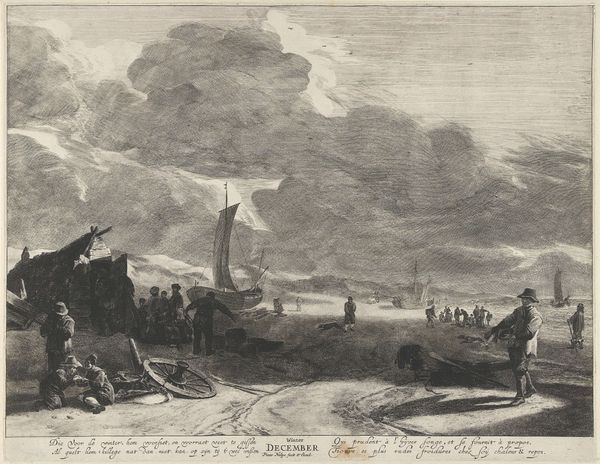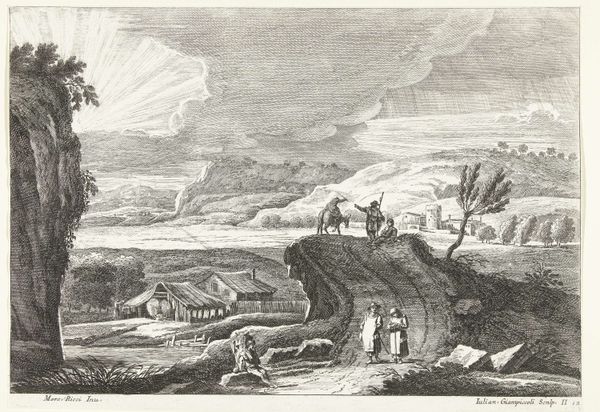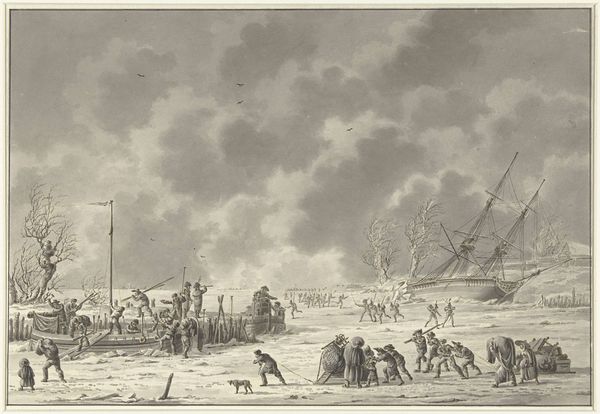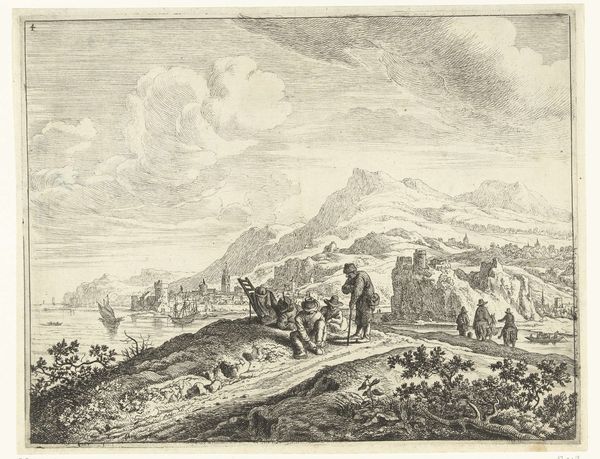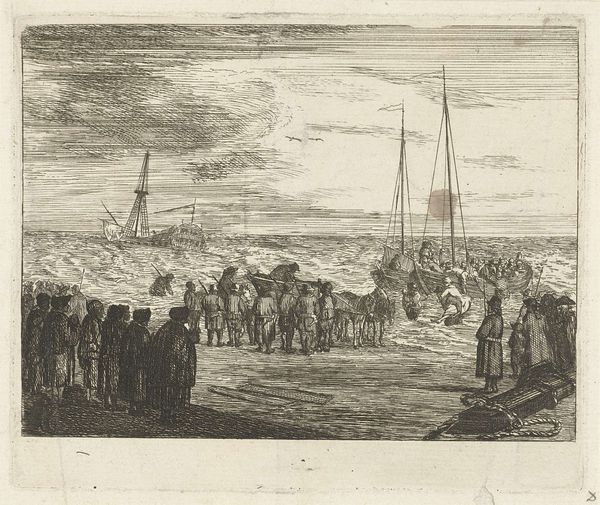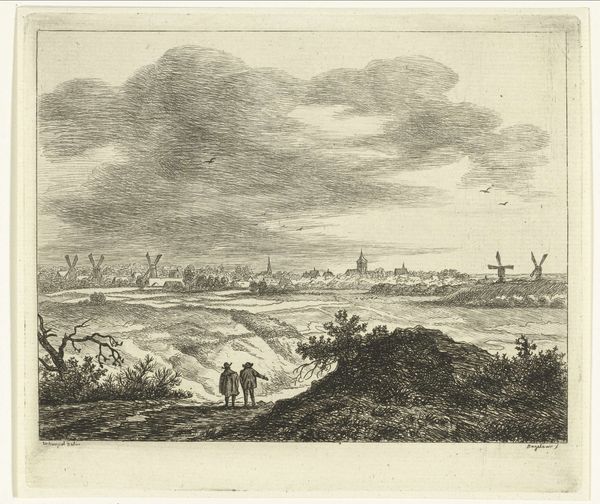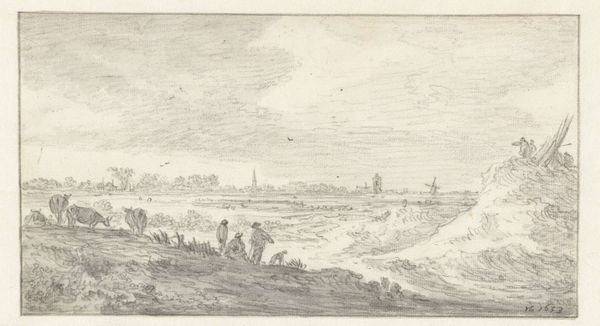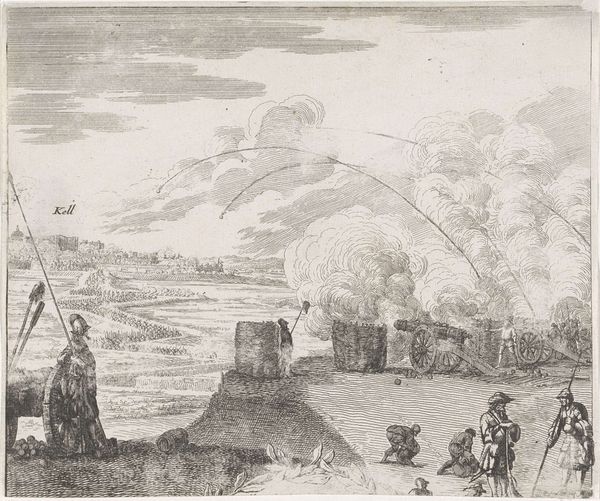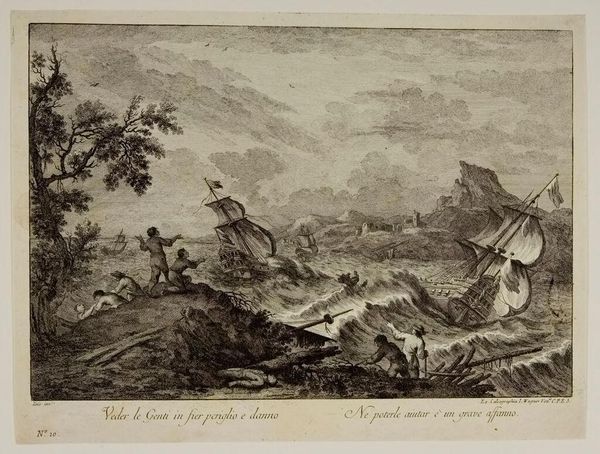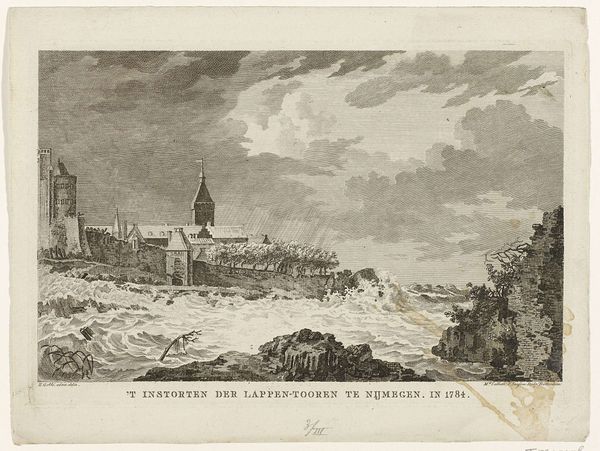
Dimensions: height 120 mm, width 143 mm
Copyright: Rijks Museum: Open Domain
This etching, made in 1764 by an anonymous artist, depicts the execution of mutineers from the ship Nyenburg. The gallows stand atop a hill, a stark symbol against the skyline, while below, spectators gather, their forms rendered with the meticulous detail characteristic of the time. The image is reminiscent of other depictions of public executions, such as those by Jacques Callot, where the spectacle of death serves as a warning and a means of social control. Consider the gallows itself, a symbol deeply rooted in cultural memory, evoking notions of justice, retribution, and the fragility of human life. This symbol’s power lies in its ability to elicit strong emotional responses, engaging viewers on a subconscious level. The cyclical progression of this symbol is fascinating. The gallows, a site of death, becomes a stage for the performance of power, its meaning shifting and evolving through different historical contexts.
Comments
No comments
Be the first to comment and join the conversation on the ultimate creative platform.
